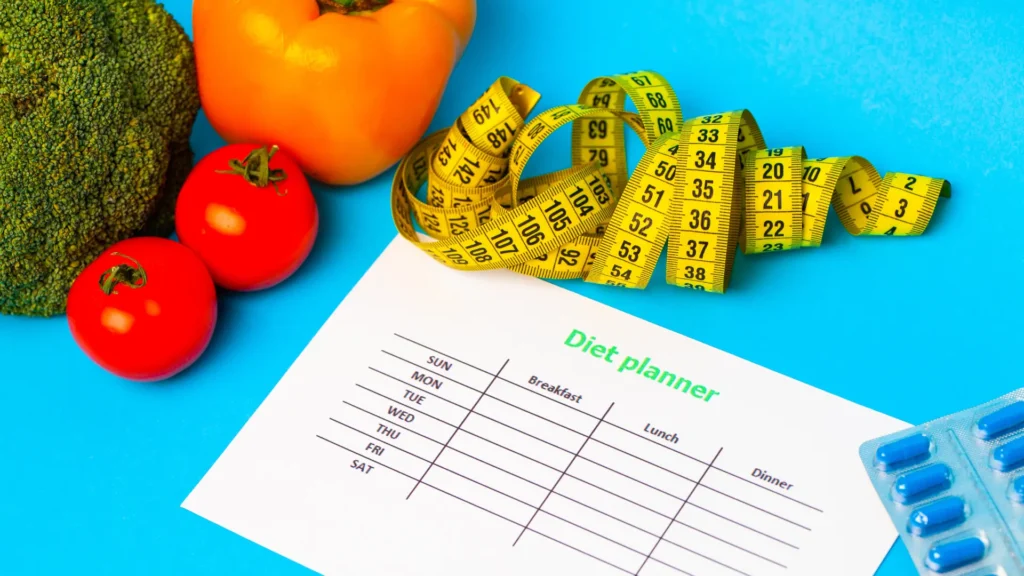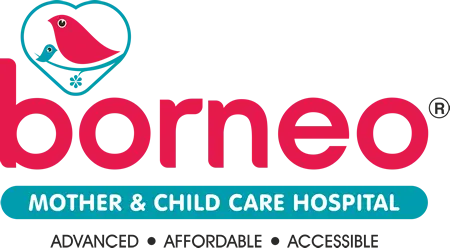Pregnancy is a time when nutrition takes centre stage. What you eat provides the essential building blocks for your growing baby and supports your own health through the incredible changes your body undergoes. While a healthy diet is vital for every expectant mother, it becomes even more critical when a pregnancy is classified as “high-risk.” Specific health conditions or circumstances often mean that standard dietary advice needs careful adjustment.
My name is Dr. Vrushali Pillai, and as a Senior Consultant Obstetrician & Gynaecologist at Borneo Hospital, Thane, part of the Borneo group serving families across Thane, Nashik, Chhatrapati Sambhaji Nagar, and Raipur, maternal safety is our absolute priority. We believe knowledge empowers families. This means integrating expert medical management with crucial support services, including personalised nutritional guidance.
Understanding the right Dietary Considerations for High-Risk Pregnancies is not about restrictive eating; it’s about making informed choices to actively manage your health and support the best possible outcome for you and your little one. This article will explore some key nutritional strategies, but please remember – and this is crucial – this information is for general guidance only and absolutely cannot replace personalised advice from your doctor or a registered dietitian/nutritionist. Your needs are unique.
Why Does Diet Matter More in High-Risk Pregnancies?
In a high-risk pregnancy, your diet moves beyond general well-being and becomes an active tool in managing specific challenges:
- Managing Maternal Conditions: What you eat directly impacts conditions like gestational diabetes (controlling blood sugar) or pre-existing hypertension (managing blood pressure).
- Supporting Foetal Growth: Optimal nutrition is critical if there are concerns about the baby’s growth rate (Foetal Growth Restriction or FGR). Ensuring adequate nutrient delivery is key.
- Addressing Pregnancy Complications: Diet plays a direct role in managing conditions like Gestational Diabetes Mellitus (GDM) that arise during pregnancy.
- Boosting Maternal Well-being: Coping with a high-risk pregnancy can be demanding. Proper nutrition provides the energy you need, supports your immune system, and aids in recovery.
- Appropriate Weight Gain: Diet is fundamental to achieving healthy weight gain during pregnancy – avoiding both insufficient and excessive gain, which can each pose risks, especially in high-risk scenarios.

General Nutritional Principles: The Foundation
Before looking at specific conditions, let’s cover the basics that apply to most pregnancies:
- Balanced Diet: Aim for a variety of foods providing macronutrients – good quality carbohydrates (whole grains, fruits, vegetables), adequate protein (dals, legumes, eggs, lean meats), and healthy fats (nuts, seeds, avocados) – plus essential micronutrients (vitamins and minerals).
- Key Nutrients:
- Folic Acid: Vital, especially early on, for preventing neural tube defects. Found in leafy greens, lentils, beans, and fortified foods. Often supplemented.
- Iron: Crucial for preventing anaemia, common in India. Sources includes lean meats, poultry, fish, dals, spinach, fortified grains. Remember to have Vitamin C-rich foods (like lemon, amla, tomato) alongside to boost absorption.
- Calcium & Vitamin D: Essential for bone health. Found in dairy products (milk, paneer, yoghurt/curd), ragi, sesame seeds, leafy greens. Vitamin D (from sunlight, fortified foods) is needed for calcium absorption; supplementation is often required, consult your doctor.
- Protein: The building block for your baby. Excellent Indian sources are dals, lentils, chickpeas, beans, paneer, tofu, eggs, lean chicken, and fish.
- Omega-3 Fatty Acids (DHA): Important for baby’s brain and eye development. Found in fatty fish (choose low-mercury options like salmon or sardines, if non-vegetarian), walnuts, flaxseeds (alsi).
- Hydration: Drink plenty of water throughout the day. Coconut water, buttermilk (chaas), and soups also contribute.
- Food Safety: Be vigilant. Wash fruits and vegetables thoroughly. Cook meat, poultry, and eggs completely. Avoid unpasteurised milk or cheese.
Specific Dietary Considerations for Common High-Risk Conditions
Now, let’s look at how diet needs to be customised for certain high-risk situations. Remember, these are general pointers; your specific plan must come from your healthcare team.
1. Gestational Diabetes (GDM) / Pre-existing Diabetes:
- Goal: Maintain stable blood sugar levels throughout the day.
- Strategies: This require careful carbohydrate management. Choose complex carbohydrates with fibre (whole wheat roti/chapati, millets like jowar/bajra/ragi, brown rice, oats, dals, legumes) over refined ones (maida products, white bread, sugary items). Portion control is key. Spread carbohydrate intake across meals and snacks. Limit or avoid sugary drinks, sweets, mithai, and fruit juices. Include good sources of protein and healthy fats in each meal to help stabilise blood sugar. Eating meals at regular times is very important. Working closely with a nutritionist, like those available at Borneo Hospital, is essential for creating a personalised Indian meal plan that works for you.
2. Hypertension / Pre-eclampsia:
- Goal: Help manage blood pressure and support overall cardiovascular health.
- Strategies: The primary focus is reducing sodium (salt) intake significantly. This means limiting added salt in cooking and avoiding high-sodium foods common in Indian diets like pickles (achar), papads, processed snacks (chips, bhujia), canned goods, and salty sauces. Read labels carefully. Emphasise fresh, home-cooked meals using herbs, spices (like ginger, garlic, turmeric, coriander), lemon juice, or tamarind for flavour instead of excess salt. Ensure adequate intake of potassium (bananas, spinach, sweet potato, coconut water) and calcium (dairy, ragi), which can help regulate blood pressure.
3. Anaemia (Iron-Deficiency):
- Goal: Increase iron levels and improve haemoglobin count.
- Strategies: Focus on regularly including iron-rich foods. Good vegetarian sources are lentils (dals), chickpeas (chana), kidney beans (rajma), black-eyed peas (lobia), spinach and other dark green leafy vegetables (like methi, bathua), dates, figs, raisins, jaggery (in moderation), and iron-fortified cereals or atta. Non-vegetarian sources include lean red meat, chicken liver, poultry, and fish. Crucially, consume Vitamin C-rich foods (amla, guava, citrus fruits, tomatoes, capsicum) with your iron sources to significantly boost absorption. Avoid drinking tea or coffee immediately before or after iron-rich meals, as they interfere with absorption. Follow your doctor’s prescription for iron supplements diligently; diet alone often isn’t enough for severe anaemia.
4. Multiple Gestation (Twins, Triplets, etc.):
- Goal: Meet the substantially increased energy and nutrient demands of growing multiple babies.
- Strategies: Calorie, protein, folic acid, iron, calcium, and other micronutrient needs are higher than in a singleton pregnancy. The focus should be on nutrient-dense foods – getting more nutritional value from each bite. Think whole grains, lean proteins, plenty of fruits and vegetables, dairy, nuts, and seeds. Eating smaller, more frequent meals might be easier to manage than three large ones. A personalised plan from a nutritionist, like those at Borneo Hospital, is vital to ensure you’re meeting these increased needs appropriately.
5. Foetal Growth Restriction (FGR / IUGR):
- Goal: Optimise maternal nutrition to support the baby’s growth potential as much as possible.
- Strategies: While dietary changes alone may not resolve FGR caused by placental issues, ensuring the mother receives adequate calories and, particularly, sufficient high-quality protein is important. Addressing any underlying maternal nutritional deficiencies, such as anaemia, is also key. The main management involve close medical monitoring of the baby’s growth and well-being.
6. Maternal Obesity:
- Goal: Promote healthy, gradual weight gain within recommended limits; reduce risk of associated complications like GDM and hypertension.
- Strategies: The focus is on diet quality. Choose whole, unprocessed foods: fruits, vegetables, whole grains (instead of refined ones), lean protein sources, low-fat dairy. Practicing portion control is essential. Limit intake of fried foods, sweets, sugary drinks, and highly processed snacks which provide calories but few nutrients. Regular meal timings help manage hunger. It’s crucial to understand this isn’t about restrictive dieting, which is harmful in pregnancy, but about making balanced, healthy choices with professional guidance.
The Essential Role of a Nutritionist / Dietitian
Given the complexities, navigating Dietary Considerations for High-Risk Pregnancies effectively requires expert help.
- Why Seek Help: A registered dietitian or qualified nutritionist can translate medical needs into practical, personalised food choices. Generic advice often falls short.
- Personalised Plans: They consider your specific medical condition, blood test results, weight goals, activity level, food preferences, allergies, and importantly, your cultural dietary patterns (vegetarian, non-vegetarian, specific regional Indian cuisines).
- Support at Borneo Hospital: We understand the importance of this. Borneo Hospital offers integrated nutritional counselling services, ensuring your dietary plan complements your medical management seamlessly.
Foods to Generally Limit or Avoid
Beyond condition-specific advice, some general cautions apply:
- Food Safety: Continue strict food safety – avoid raw/undercooked meat, poultry, eggs, seafood; unpasteurised milk/cheese; pre-prepared salads; ensure thorough washing of produce.
- Caffeine: Limit coffee, tea, cola, and chocolate as per your doctor’s advice (usually below 200mg daily).
- Processed Foods: Minimise intake of packaged snacks, fast food, ready-to-eat meals high in unhealthy fats, sodium, and sugar. Prioritise fresh, home-prepared meals.
- Alcohol: There is no safe amount of alcohol during pregnancy. Complete avoidance is essential.

Practical Tips for Success
Making dietary changes can feel challenging, but small steps help:
- Plan Ahead: A simple weekly meal plan helps ensure balanced meals and reduces stress.
- Healthy Snacking (Indian Ideas): Keep options like roasted makhana, nuts (almonds/walnuts), seeds (pumpkin/sunflower), yoghurt/curd, fresh fruit, vegetable sticks, sprouts chaat, or a small bowl of dal handy.
- Read Food Labels: Get familiar with reading labels for serving sizes, calories, fat, sugar, and sodium content.
- Cook Smart: Prefer steaming, baking, grilling, pressure cooking, or stir-frying with minimal oil over deep-frying.
- Stay Consistent: Try to eat meals and snacks at regular times each day.
Nutrition is undeniably a powerful tool in your toolkit for managing high-risk pregnancies. Making conscious, informed dietary choices, appropriate for your specific situation, actively contributes to your health and your baby’s development alongside expert medical care.
However, I must stress again: the Dietary Considerations for High-Risk Pregnancies are highly individualised. While this article provides general insights, it is absolutely essential to work closely with your doctor and a registered dietitian or nutritionist to create a plan that is safe and effective for you.
At Borneo Hospital, we are committed to this holistic approach, providing integrated medical and nutritional support. We encourage you to view healthy eating not as a restriction, but as a positive, empowering way to nurture yourself and your growing baby during this special, albeit potentially challenging, time.



